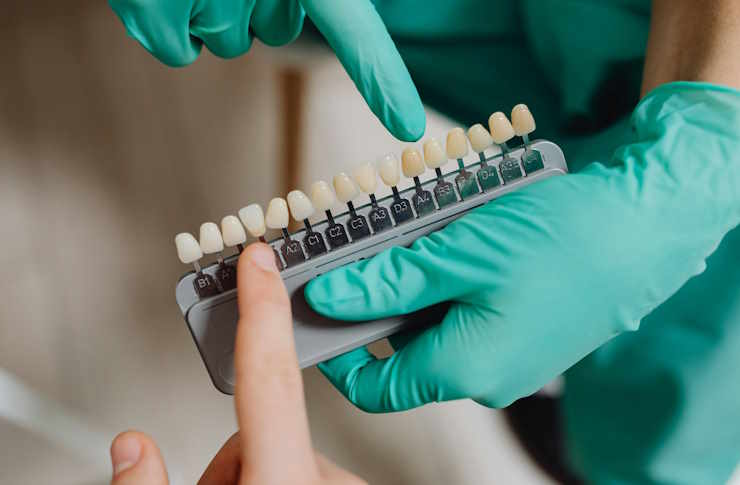Complete Guide to Modern Dental Implants & Tooth Replacement
Discover how modern dental implants restore chewing ability, appearance, and confidence. This comprehensive guide explains implant types (endosteal, screwless, All-on-4, mini), the step-by-step treatment timeline, typical cost ranges and insurance considerations, plus recovery tips and long-term maintenance to help you decide if implants are right for your oral health.

Dental implants are widely regarded as the most reliable long-term solution for replacing missing teeth. They mimic natural roots, support lifelike prosthetics, and frequently provide superior stability and comfort compared with removable dentures. Whether you need one tooth replaced or a full-arch reconstruction, familiarizing yourself with implant varieties, the clinical stages involved, estimated costs and insurance factors, and proper maintenance will help you choose confidently.
Types of dental implants and when they’re used
Implant systems are designed to suit different medical situations and jaw anatomies. Here are the main categories patients will encounter:
-
Endosteal implants: This is the standard approach. Titanium posts are surgically embedded into the jawbone and act as sturdy anchors for crowns, bridges, or implant-retained dentures. They’re versatile and long-lasting when placed in healthy bone.
-
Screwless implants: These use alternative connection mechanisms — for example, friction-fit or Morse taper connections — instead of external retention screws. They can simplify prosthetic attachment and may reduce some mechanical complications, though they depend on precise fitting and clinician experience.
-
All-on-4 (full-arch) protocol: For people missing most or all teeth, this method uses four strategically angled implants to support a fixed prosthesis. It often avoids extensive bone grafting and can shorten treatment time and cost compared with placing many individual implants.
-
Mini implants: Narrow-diameter implants are used when space is limited or to stabilize overdentures. They are less invasive and can be placed with minimal bone, but they aren’t appropriate for every restorative need and may have different longevity expectations than standard implants.
Each option has trade-offs in durability, surgical complexity, and suitability for specific bone conditions. A specialist will evaluate bone volume, bite forces, and aesthetic goals to recommend the best system.
The treatment journey: step by step
The implant process typically unfolds over several months to ensure proper healing and integration:
-
Comprehensive evaluation and planning: Your clinician will take a medical and dental history, perform an exam, and obtain imaging such as CBCT scans to map bone anatomy and plan implant positioning.
-
Bone augmentation when required: If there’s inadequate jawbone, grafting or a sinus lift may be recommended to build a stable foundation. These procedures extend overall treatment time but are often essential for long-term success.
-
Implant placement surgery: Under local anesthesia, sedation, or general anesthesia when needed, the implant post is inserted into the jawbone. Techniques differ depending on implant type and clinical goals.
-
Osseointegration: Over roughly 3–6 months, bone cells grow around the implant surface and create a strong biological bond. Temporary prostheses or removable appliances can maintain appearance and function during this phase.
-
Abutment connection: After integration is confirmed, an abutment is attached to the implant to connect the final crown or bridge.
-
Final prosthesis delivery: A custom crown, bridge, or denture is fabricated and secured to the abutments, restoring aesthetics and chewing function.
Some patients may qualify for immediate loading protocols that place a temporary restoration at the time of implant surgery; suitability depends on bone quality and surgical stability.
Costs, coverage, and the pricing table
Implant expenses vary widely based on the number of implants, the type chosen, whether bone grafting is needed, regional pricing, and clinician expertise. Many patients combine insurance, savings plans, and financing to manage out-of-pocket costs.
| Procedure Type | Typical Cost Range | Possible Insurance Coverage |
|---|---|---|
| Single tooth implant | $3,000 - $4,500 | Partial coverage if deemed medically necessary |
| Full-mouth implants (full arch) | $20,000 - $45,000 | Partial coverage possible; varies by plan |
| Screwless implant systems | $3,500 - $6,000 | Depends on insurer and plan specifics |
Prices, rates, or cost estimates mentioned in this article are based on the latest available information but may change over time. Independent research is advised before making financial decisions.
Insurance policies are inconsistent: some plans will subsidize parts of implant therapy when replacement is medically necessary, while others treat implants as elective and limit reimbursements. Discuss coverage beforehand and request pre-authorization when possible.
Recovery, maintenance, and long-term success
Short-term recovery after implant placement is usually manageable: many patients resume normal activities within a few days, though soreness and swelling are common for the first week. Complete bone healing and final restoration take months.
To promote success:
- Maintain meticulous oral hygiene, brushing and flossing around the implant and prosthetic.
- Avoid hard, sticky, or abrasive foods while surgical sites heal.
- Attend scheduled follow-up appointments so your clinician can assess healing and prosthetic fit.
- Stop tobacco use — smoking impairs healing and increases the risk of implant failure.
With good home care and routine professional maintenance, implants can last for decades and often a lifetime. Long-term outcomes also depend on systemic health, bone quality, and adherence to recall visits.
How to choose a clinician and make an informed decision
Before committing to implant therapy, verify the clinician’s experience with the specific implant system proposed and ask about complication rates, follow-up protocols, and warranty or maintenance policies. Request to see before-and-after cases and, if possible, speak with prior patients.
Consider a second opinion for plans that involve extensive grafting or full-arch reconstruction. Ask detailed questions about timelines, contingencies (e.g., if an implant fails), and financing options.
This article is for informational purposes only and should not be considered medical advice. Please consult a qualified healthcare professional for personalized guidance and treatment.






